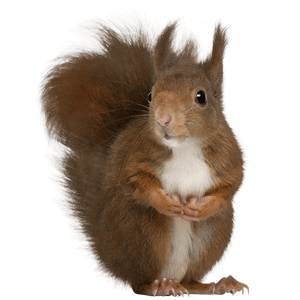As the vibrant hues of summer gradually give way to the warm, earthy tones of autumn, gardeners are presented with the perfect opportunity to prepare for a breathtaking display of color next spring. Fall is the ideal time to plant spring-blooming bulbs, which will lay dormant through the winter months and burst forth with a riot of color as soon as the weather warms. Explore the joys of planting fall bulbs and learn some essential tips to ensure a stunning springtime show.
There are numerous types of fall bulbs to choose from, each with its unique characteristics and bloom times. Within each type, you’ll find an extensive selection of varieties to meet your requirements for height, colour, and blooming time. Here is a list of some popular types of fall bulbs:
When planning your garden, consider factors such as bloom time, color, height, and growing conditions to create a beautiful and well-balanced spring flower display. Planting a variety of bulb types can ensure a long-lasting and diverse burst of color in your garden.
1. Tulips (Tulipa spp.):
- Tulips are renowned for their vibrant colors and diverse varieties.
- They come in various shapes, sizes, and bloom times, including early, mid, and late spring varieties.
2. Daffodils (Narcissus spp.):
- Daffodils are known for their cheerful, trumpet-shaped blooms.
- They come in various colors, including white, yellow, and orange.
- Daffodils are often deer-resistant and naturalize well in many regions.
3. Crocuses (Crocus spp.):
- Crocuses are some of the earliest spring bloomers, often appearing as soon as winter retreats.
- They come in various colors, including purple, yellow, and white.
4. Hyacinths (Hyacinthus spp.):
- Hyacinths are known for their fragrant, dense flower spikes.
- They come in a range of colors and are often used in spring bouquets.
5. Alliums (Allium spp.):
- Alliums, also known as ornamental onions, offer distinctive spherical flower heads.
- They come in various sizes, from small to giant, and add architectural interest to the garden.

6. Iris (Iris spp.):
- Irises are known for their unique, iris-shaped flowers.
- They come in various colors and varieties, including bearded irises and Dutch irises.
7. Snowdrops (Galanthus spp.):
- Snowdrops are tiny, bell-shaped flowers that bloom very early in the spring, often pushing through snow.
- They are prized for their delicate appearance and resilience.
8. Scilla (Scilla spp.):
- Scilla, also known as Siberian squill, produces charming blue or white star-shaped flowers.
- They naturalize easily and are excellent for naturalizing in woodland gardens.
9. Fritillaria (Fritillaria spp.):
- Fritillaria bulbs produce unique, bell-shaped flowers in various colors, including purple, orange, and yellow.
- They are prized for their unusual appearance.
10. Muscari (Muscari spp.): – Muscari, often called grape hyacinths, form dense clusters of small, bell-shaped flowers. – They come in shades of blue, purple, and white and are known for their prolific growth.
11. Anemones (Anemone spp.): – Anemones produce daisy-like flowers in various colors, including white, pink, and purple. – They can be early spring or late spring bloomers, depending on the variety.

Timing Matters
Fall bulbs should be planted when the soil temperature begins to cool, typically in late September to early November, depending on your region. Planting at this time allows the bulbs to establish strong root systems before the ground freezes, ensuring a healthy start for next year’s blossoms. In Ontario, the average date of the first frost is mid-October, and waiting until after this occurs helps to ensure that your bulbs won’t begin to grow if the warmth of summer persists. Later planting is also thought to help deter squirrels as they may be finished gathering their wares for the winter and less likely to take your new plantings.
Location, Location, Location
Select a suitable location for your bulb garden. Most bulbs prefer well-drained soil and full to partial sunlight. Be sure to plant them in an area that receives at least 6 hours of sunlight per day. Gardens that are shadey during the late spring and summer when the folaige of deciduous trees leafs out, may actually be great planting spots for early blooming bulbs such as snowdrops, crocus, and miniature tulips. Proper drainage is vital to prevent bulb rot, so avoid areas prone to standing water.
Planting Depth
The rule of thumb for planting depth is to place bulbs at a depth equal to three times their height. For example, if you have a 2-inch-tall bulb, dig a hole that is 6 inches deep. This ensures that the bulbs are adequately protected from frost while allowing them to root deeply.
Planting Techniques
When planting bulbs, ensure they are placed with the pointed end facing upward. This is usually the end where you can see the remains of the old stem. The exception to this rule is fritillaria bulbs; these tend to have a concave top that can be prone to rot, so plant these bulbs on their side. To create a visually appealing display, plant bulbs in large groups or clusters rather than single rows. This provides a natural and visually striking effect.
Soil Preparation
Before planting, amend the soil with organic matter, such as compost or well-rotted manure, to improve fertility and drainage. Bulbs benefit from nutrient-rich soil that allows them to thrive during their growing season.
Watering and Mulching
After planting, water the bulbs thoroughly to help settle the soil and stimulate root growth. Adding a layer of mulch on top of the soil can help conserve moisture, regulate soil temperature, and suppress weeds. Be sure to avoid mulching too early, as it may insulate the soil and delay root development.
Maintenance
Once your bulbs are in the ground, there is little maintenance required. However, consider applying a balanced, slow-release fertilizer in the spring as the foliage emerges. After the flowers have bloomed and the foliage begins to yellow and die back, you can remove the spent flowers but leave the foliage in place until it withers naturally. This allows the bulbs to replenish their energy for the next growing season.
Deer and Squirrel Protection
In some areas, deer and squirrels may find your newly planted bulbs quite tempting. To deter them, consider using deer-resistant plants around your bulb garden or applying deer repellent. You can also cover your planting area with chicken wire or use specially designed bulb cages to protect your bulbs from critters. Deterring squirrels from eating your precious flower bulbs can be a frustrating challenge for gardeners. Squirrels are known for their digging habits, and they often see bulbs as a tasty treat. Fortunately, there are several effective methods to discourage squirrels from digging up and devouring your bulbs:
 Use Squirrel-Repellent Bulbs: Some bulb varieties, like Fritillaria imperialis (crown imperial) and Alliums, are naturally repellent to squirrels due to their smell or taste. Planting these alongside your vulnerable bulbs can deter squirrels.
Use Squirrel-Repellent Bulbs: Some bulb varieties, like Fritillaria imperialis (crown imperial) and Alliums, are naturally repellent to squirrels due to their smell or taste. Planting these alongside your vulnerable bulbs can deter squirrels.- Plant Bulbs in Squirrel-Resistant Locations: Choose planting locations that are less accessible to squirrels. For instance, consider planting bulbs under larger, established plants or in raised beds where squirrels have more difficulty digging.
- Install Physical Barriers – Chicken Wire or Wire Mesh: Place wire mesh or chicken wire over the planting area. Bury it a few inches below the soil surface to prevent squirrels from digging through. This allows the bulbs to grow through while keeping squirrels out. Alternativel, lay chicken wire over the planting area and secure it with landscape staples or rocks. Ensure it is taut and close to the soil surface.
- Apply Repellents: There are commercial squirrel repellent sprays available that can deter squirrels from digging up your bulbs. These repellents typically have a strong odor or taste that squirrels find unpleasant. Follow the manufacturer’s instructions for application.
- Use Natural Repellents: Some natural substances can deter squirrels; Fertilo Hen Manure is very effective, blood meal can also be used.
- Scare Tactics: Employ scare tactics to make your garden less appealing to squirrels:motion activated sprinklers can startle squirrels when they detect motion.
**Noise: Wind chimes, radios, or even your dog’s presence can make squirrels uneasy and less likely to forage in your garden. - Plant Bulbs Deep: Plant bulbs at the recommended depth or even a bit deeper. Squirrels are less likely to dig deep holes in search of bulbs.
- Regularly Monitor and Maintain: Keep an eye on your garden and repair or reapply deterrents as needed. Squirrels can be persistent, so it’s essential to stay vigilant.
Remember that not all methods will work equally well in every garden, as squirrel behavior can vary. A combination of several deterrent strategies is often the most effective approach to protect your bulbs from these persistent critters. Experiment with different methods to find the ones that work best for your specific garden and local squirrel population.
Don’t let the threat of squirrels deter you from planting! Planting fall bulbs is a time-honored tradition that yields incredible rewards. With careful selection, proper planting techniques, and a little patience, you can create a stunning springtime garden that will delight your senses and lift your spirits. So, roll up your sleeves, grab your gardening tools, and start planting those fall bulbs for a garden that will leave you and your neighbors in awe next spring. Happy gardening!




